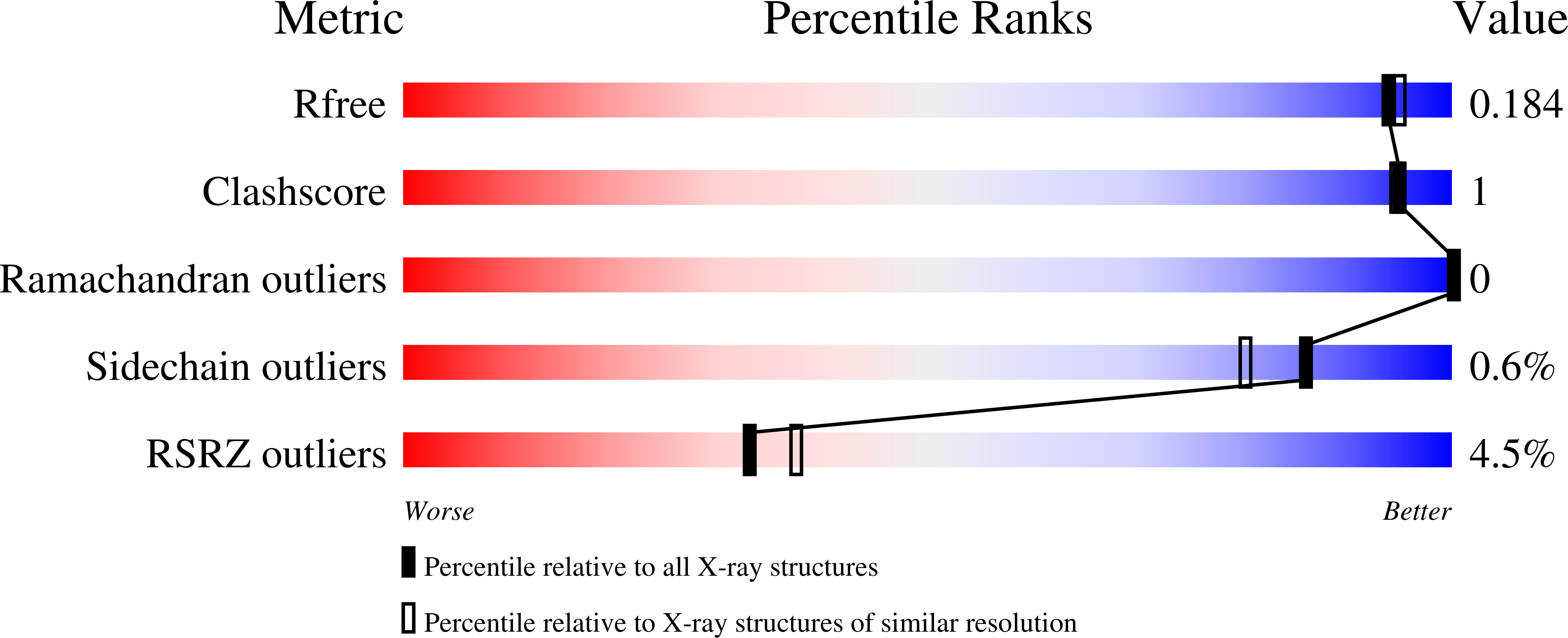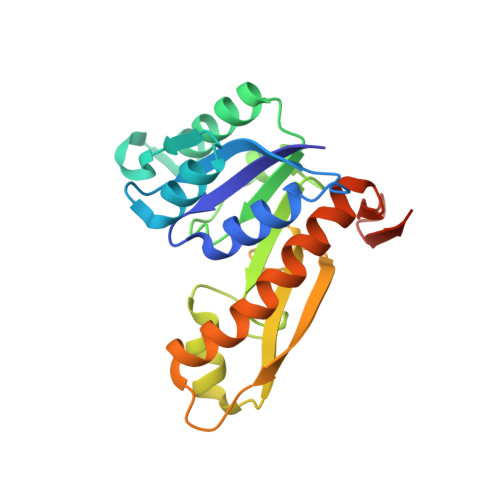Structural and Enzymatic Analysis of Tumor-Targeted Antifolates That Inhibit Glycinamide Ribonucleotide Formyltransferase.
Deis, S.M., Doshi, A., Hou, Z., Matherly, L.H., Gangjee, A., Dann, C.E.(2016) Biochemistry 55: 4574-4582
- PubMed: 27439469
- DOI: https://doi.org/10.1021/acs.biochem.6b00412
- Primary Citation of Related Structures:
4ZYT, 4ZYU, 4ZYV, 4ZYW, 4ZYX, 4ZYY, 4ZYZ, 4ZZ0 - PubMed Abstract:
Pemetrexed and methotrexate are antifolates used for cancer chemotherapy and inflammatory diseases. These agents have toxic side effects resulting, in part, from nonspecific cellular transport by the reduced folate carrier (RFC), a ubiquitously expressed facilitative transporter. We previously described 2-amino-4-oxo-6-substituted pyrrolo[2,3-d]pyrimidine antifolates with modifications of the side chain linker and aromatic ring that are poor substrates for RFC but are efficiently transported via folate receptors (FRs) and the proton-coupled folate transporter (PCFT). These targeted antifolates are cytotoxic in vitro toward FR- and PCFT-expressing tumor cells and in vivo with human tumor xenografts in immune-compromised mice, reflecting selective cellular uptake. Antitumor efficacy is due to inhibition of glycinamide ribonucleotide (GAR) formyltransferase (GARFTase) activity in de novo synthesis of purine nucleotides. This study used purified human GARFTase (formyltransferase domain) to assess in vitro inhibition by eight novel thieno- and pyrrolo[2,3-d]pyrimidine antifolates. Seven analogues (AGF23, AGF71, AGF94, AGF117, AGF118, AGF145, and AGF147) inhibited GARFTase with Ki values in the low- to mid-nanomolar concentration range, whereas AGF50 inhibited GARFTase with micromolar potency similar to that of PMX. On the basis of crystal structures of ternary complexes with GARFTase, ¦Â-GAR, and the monoglutamyl antifolates, differences in inhibitory potencies correlated well with antifolate binding and the positions of the terminal carboxylates. Our data provide a mechanistic basis for differences in inhibitory potencies between these novel antifolates and a framework for future structure-based drug design. These analogues could be more efficacious than clinically used antifolates, reflecting their selective cellular uptake by FRs and PCFT and potent GARFTase inhibition.
Organizational Affiliation:
Division of Medicinal Chemistry, Graduate School of Pharmaceutical Sciences, Duquesne University , 600 Forbes Avenue, Pittsburgh, Pennsylvania 15282, United States.


















